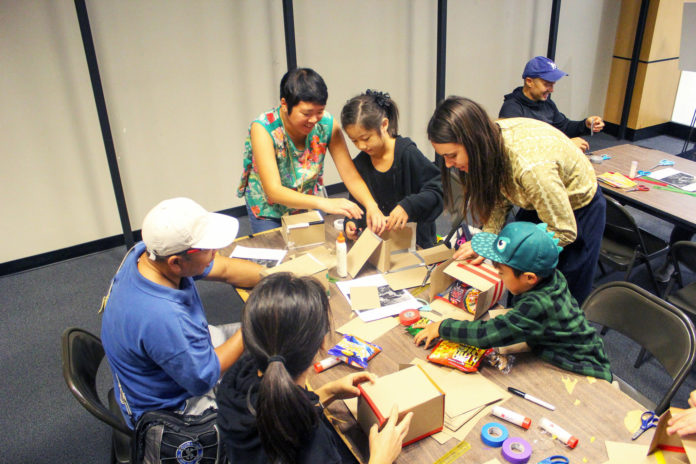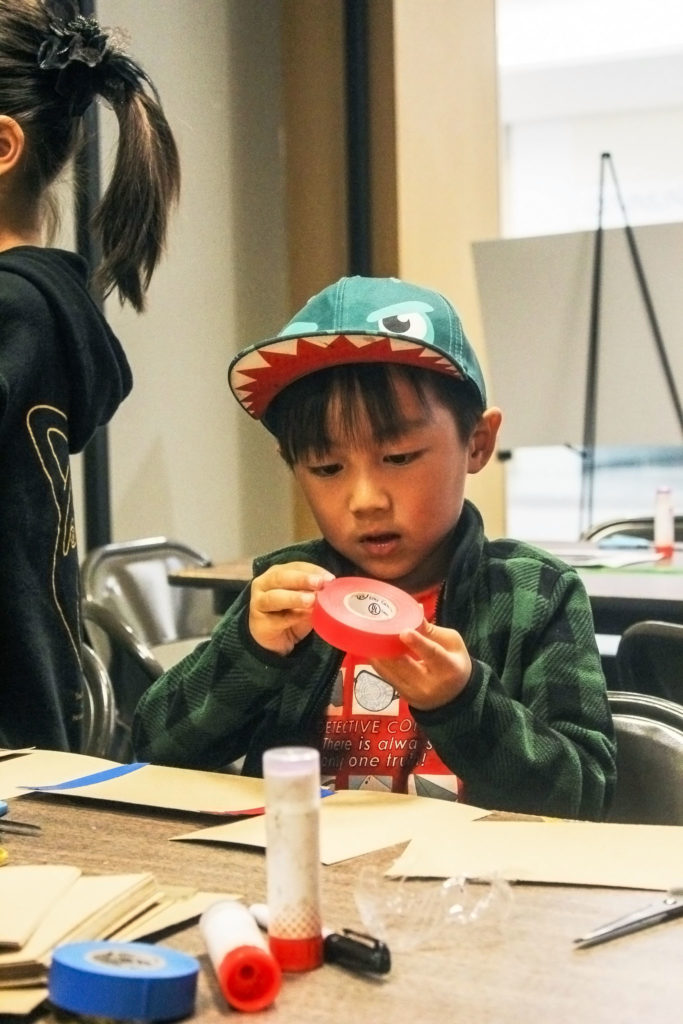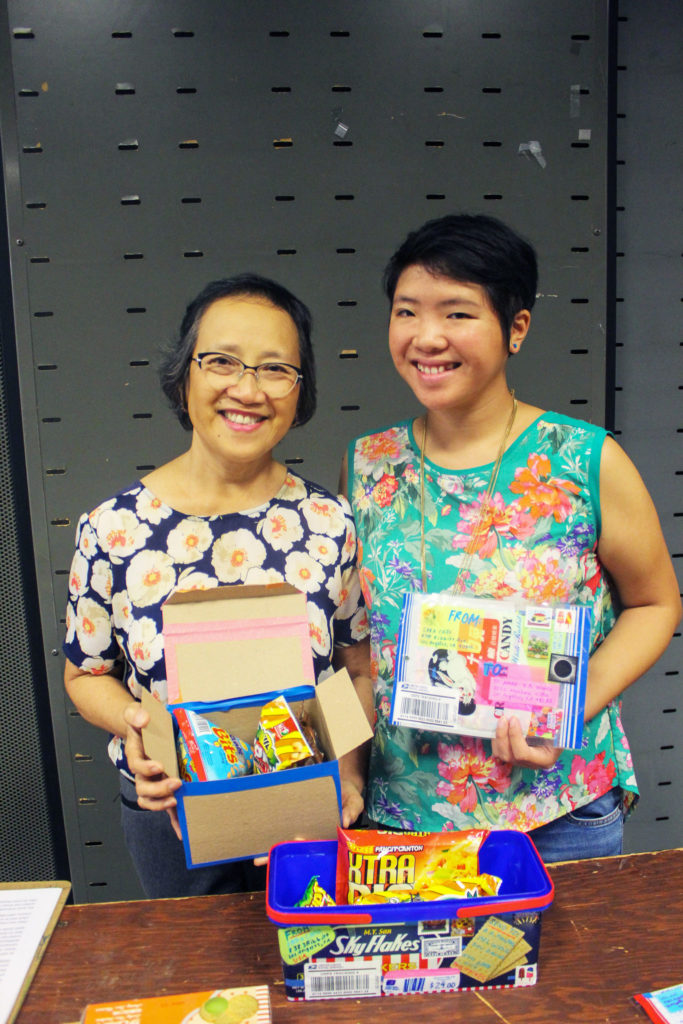
In an empty storefront in Eagle Rock Plaza, artist Sara Chao organized rows of Filipino snacks on a long table in preparation for her event, “Balikbayan Box: A Care Package Workshop,” hosted by Center for the Arts Eagle Rock (CFAER) Sept. 28. She brought out boxes of traditional Filipino snacks shoppers could find at the Filipino supermarket Seafood City one floor below — Leche Flan flavored ButterCream crackers, Buko Pandan Cupp Keyks and Lucky Me! instant noodles in pancit canton flavor — and laid them out alongside rectangular sheets of cardboard and craft supplies. During the art workshop, guests assembled and filled their own balikbayan boxes while Sara explained their context within the Filipino diaspora culture.
The name “balikbayan box” comes from the Tagalog term for a returning Filipino. Families send large boxes, which appear to be more packaging tape than cardboard, filled to capacity with essentials like canned food, clothing and treats their relatives would need back home in the Philippines. Sara, a third-generation Filipino-Chinese American, said balikbayan boxes are intrinsic to her identity as a Filipino. Growing up, her lola, or grandmother, would save up supplies for months to send boxes back to her native Philippines. Sara’s art is inspired by these memories.

“My art practice has to do with trying to predict, what are the things from today that I will have nostalgia for in the future, that I can be able to really appreciate them now?” Sara said. “I didn’t personally always put [balikbayan boxes] together, but they were always in the periphery — this idea that we’re always sending stuff home to the Philippines.”
Bess Chao, Sara’s mother, remembers immigrating to Los Angeles from the Province of Batangas in 1982. Balikbayan boxes remind Bess of her late mother, who would individually wrap potatoes in newspaper so they would not sprout before they arrived a month later at her best friend’s village. Bess said her mother loved clothes, but whenever she grew tired of an outfit, she would send it to the Philippines.
As she talked about her mother, Bess paused and pulled out a handkerchief from her pocket to dab her eyes.
“She hand-typed pages of verses, and she would send it to her [best friend]. She would say, ‘Don’t worry about so many things. Just memorize this, just read this because it has helped me,'” Bess said.
The last time Bess sent a balikbayan box was after her mother died. She sent a box with her mother’s nice clothes and a video of the funeral to her mother’s best friend.
Occidental College Department Manager of Postal Operations Victor Chico said the easiest and safest way to send boxes or money home is through the door-to-door balikbayan shipping service LBC Express in Eagle Rock Plaza. He prefers sending money because it is easier for him to send and for his family to use.
Glassell Park resident Jay Bix said she does not send balikbayan boxes home because most of her family has emigrated from the Philippines. She brought her son Dean to the workshop, and he made a small balikbayan box for his lola, whom he described as the most Filipino person he knows. Prior to the event, he did not know what a balikbayan box was.

Many of the children present also did not know what a balikbayan box was, but they understood the idea behind it: making a gift for someone you care about. Violet Foushée was making a box filled with blue sparkles for her third-grade teacher, who recently retired. Satori Awuma pointed to her brother Xavier sitting across the table and said her box would be a surprise birthday present for him. Juliet Haynes focused on decorating her box. She glued a fabric pocket to the side and filled it with Filipino mango candy.
Eagle Rock resident Brenda Rees said she had never heard of balikbayan boxes, but she has been regularly sending care packages to her daughter who goes to school in Chicago. For Rees, the idea of sending mail to show your love is cross-cultural.
“In this day, when so much is on the internet and email and texting, it’s so nice to get things in the mail,” Rees said. “It’s even more important now because it’s that real personal touch.”
Highland Park resident Cynthia Dickson does not see the balikbayan tradition fading away, but evolving. She noticed more people, like her parents, are reusing luggage instead of using boxes to send things home out of environmental concerns. While Dickson said most of her daughter’s connection was through food, she brought her daughter Andie, who is half Filipino, to the workshop to help her learn more about Filipino traditions.
“Being a first-generation Filipino in the United States, I wanted that same exposure for my daughter. I think it’s really important as part of preservation of the culture and understanding your heritage,” Dickson said.
As Bess dried her tears, she told a joke about how much Filipinos love balikbayan boxes: A Filipino died abroad and wanted to be buried in the Philippines. Because the family paid a lot of money to transport their coffin, they filled it with essentials and other items — like they would a balikbayan box.
![]()



































